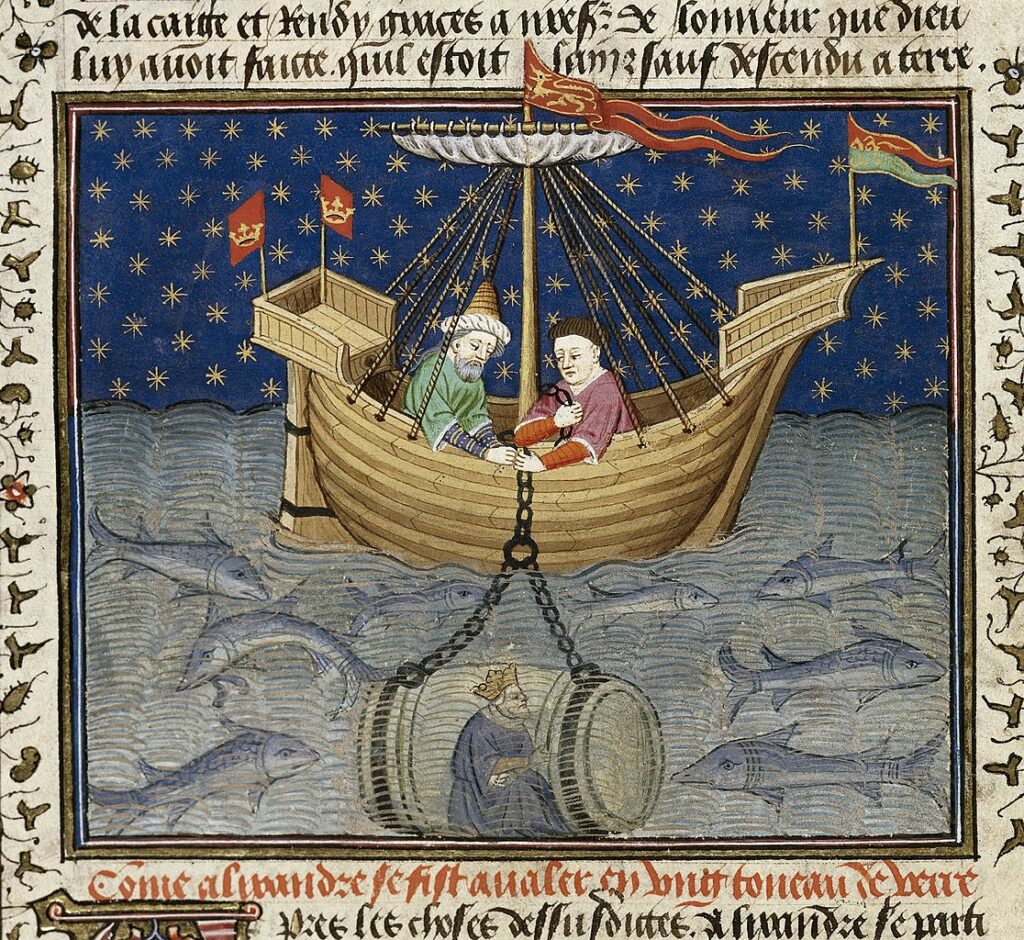Verrassingen
Under the Sea

Alexander the Great likes to get around in style. When he is not riding in his flying machine powered by griffins, he can be found sitting in a rudimentary diving bell at the bottom of the sea, watching the fish swim by. Medieval tales of Alexander depict him as more than a conqueror – he is first and foremost an adventurer, who wants to see every part of the known world and discover the parts not yet known. He is also a philosopher, not afraid to ask big questions. He once had a theoretical discussion with his tutor Aristotle about how one might go about exploring the world under the waves, since this remained undiscovered territory. In the Roman d’Alexandre, he finds a way to test their theories, letting himself be sealed up in a glass jar (known as a bathysphere) and lowered down into the sea. He also brings a cat with him for company. This sounds kind of sweet, but unfortunately the cat is there to be killed in case of emergency. Alexander has heard that the sea cannot tolerate blood and he reasons a kitty-sacrifice will cause it to throw the diving bell to the surface again.
Pointless animal cruelty aside, the episode is a testimony to the curiosity of medieval minds. The descriptions of both the diving bell and Alexander’s flying machine read almost like early science-fiction. There are a surprisingly high number of medieval tales that similarly reflect a desire to imagine other worlds. They fantasise about fairy realms and enchanted castles, the world of dreams, travels through the underworld, and apocalyptic hellscapes. Such stories show how rich and diverse medieval cultures were, but they also speak to a shared human desire to be amazed and stand in awe of the wonders around us.
Lydia Zeldenrust
Image
Alexander the Great marvelling at fish from his diving bell. Roman d’Alexandre en prose. London, British Library MS Royal 15 E VI, fol. 20v.
Source: Wikipedia

